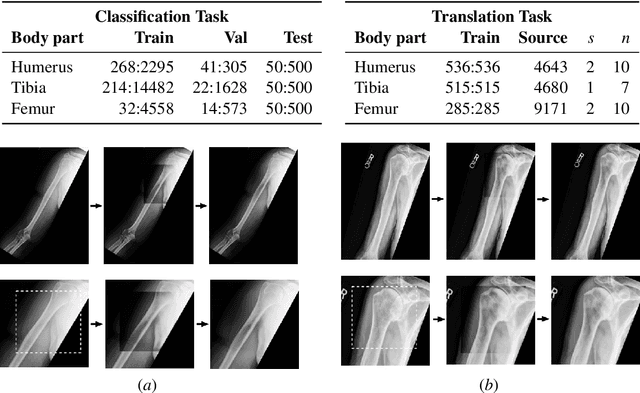Srivas Venkatesh
Generative Image Translation for Data Augmentation of Bone Lesion Pathology
Feb 06, 2019



Abstract:Insufficient training data and severe class imbalance are often limiting factors when developing machine learning models for the classification of rare diseases. In this work, we address the problem of classifying bone lesions from X-ray images by increasing the small number of positive samples in the training set. We propose a generative data augmentation approach based on a cycle-consistent generative adversarial network that synthesizes bone lesions on images without pathology. We pose the generative task as an image-patch translation problem that we optimize specifically for distinct bones (humerus, tibia, femur). In experimental results, we confirm that the described method mitigates the class imbalance problem in the binary classification task of bone lesion detection. We show that the augmented training sets enable the training of superior classifiers achieving better performance on a held-out test set. Additionally, we demonstrate the feasibility of transfer learning and apply a generative model that was trained on one body part to another.
 Add to Chrome
Add to Chrome Add to Firefox
Add to Firefox Add to Edge
Add to Edge